Here at RUSSH, we consider ourselves borderline plant mums. Give us a marble dining table, rattan chair and an overflowing pot of greenery and we'll be there before you can say "indoor garden". Naturally, as our time spent indoors has increased significantly over the last year, so has our affliction for indoor plants – what could possibly make you happier? But now, we're stepping up our game, because ordinary, tabletop pots will no longer do; taking our obsession to new heights courtesy of hanging plants.
Yes, we know that hanging plants aren't necessarily 'new' news, but the trend has definitely come a long way since its infancy. Like any indoor plant, it's important to get familiar with the right hanging plants for your space. Some prefer more light or humidity than others; while some plants are better for higher ceilings. Unlike any ordinary plant, hanging plants are far more permanent (especially when you assemble them to your ceiling), so it's important to get it right.
Below, we're sharing with you everything you need to know about hanging plants. How to make them, where to find them and the 10 best options to have in your home.
How to make hanging plants?
Truth is, there are many different ways to assemble or display a hanging plant in your home. One of the most common ways is to start with a hanging basket or a glass globe to house your plant in. Your vessel of choice entirely depends on the level of breathability your plant needs to grow.
Most hanging planters you buy from a store will usually have a rope and ceiling attachment included, but if you have a particular vision in mind, or already have a pot at home that you would like to house your plant in, you can actually find a range of great DIY tutorials online to suit all aesthetics and difficulty levels.
You can also take a different approach and try hanging your plants directly on your wall to create a cascading effect. This is a particularly great option if you have a lot of ground or space you're wanting to cover and want to create more of a feature wall.
Where to buy hanging plants?
If you're based here in Australia, you'll be able to find a great selection of hanging plant varieties at plant nurseries like Flower Power. Megastores like this usually have a designated indoor plant section; where from there, you'll be able to find the plants we have listed below as well as many others.
Otherwise, if you're looking for more boutique hanging plants, you can shop sites like The Good Plant Co or specialised nurseries like The Plant Society.
10 best hanging plants for your home
1. Tillandsia (Air Plant)
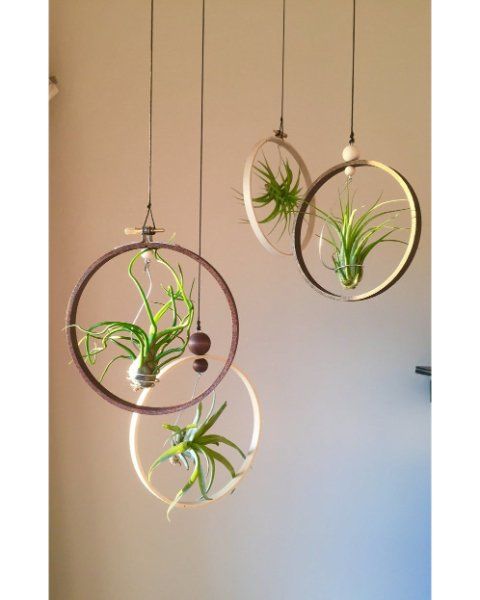
One of the main reasons why Tillandsia – commonly known as air plants – is so popular as a hanging plant is because it doesn't require potting mix to grow. All you need to do is lightly spritz them with water once a week to maintain their moisture levels. Because of the whispy and ethereal characteristics, they can be displayed really creatively around your house; especially in little glass globes or mounted on walls. It's easy to see why this low-maintenance plant could make the perfect interior design addition to your home.
2. Baby's Tears
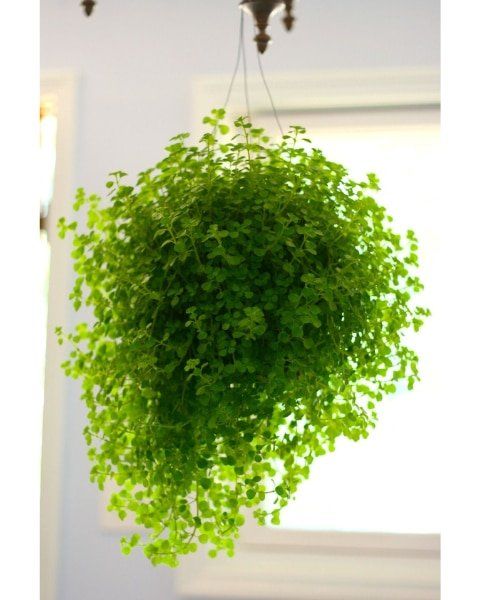
If you're wanting to bring a touch of the Mediterranean into your home, Baby's Tears is the plant choice for you. Native to the region, this plant gets its name from its small leaves that trail down its thin stems. Like most indoor plants, you should water your Baby's Tears every five to seven days – ensuring the soil stays evenly moist, but not soggy wet. Because of the way the plant propagates, Baby's Tears grow very quickly, which can create a great indoor garden feature within your home.
3. Maidenhair Fern
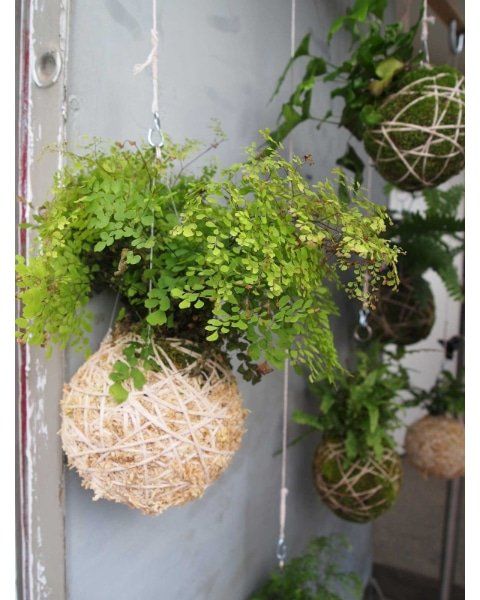
Although Maidenhair Ferns are more fragile than other hanging plants, the wispy, delicate foliage can help to add warmth, brightness and texture to any space. Though, it's important to be mindful that some indoor environments may be too dry for this plant – so, ensuring you are conscientious in keeping the humidity levels up is crucial. To do this, make sure to give your fern a spritz of water a few times a week.
4. Jade Pothos
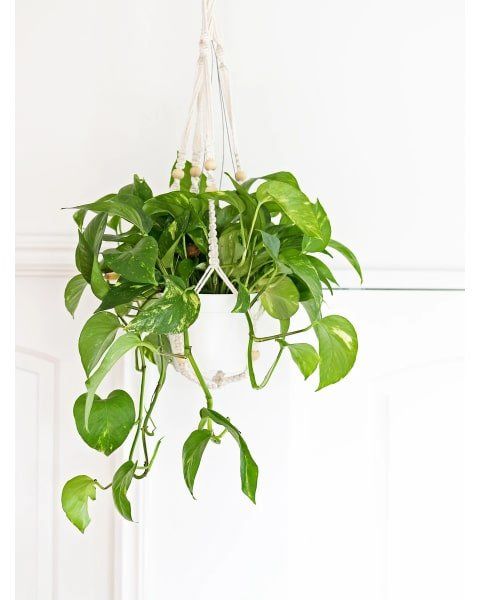
If you haven't heard of Jade Pathos, you may have heard of its alternative name – Devil's Ivy. This plant is one of the most low-maintenance options for indoor and hanging plants, due to the fact that it is easily trainable. Requiring only moderate watering every few days, Jade Pothos is known to reach incredible lengths over time, which makes it a particularly good choice if you have high ceilings or want to continue your indoor jungle along the floor or a wall.
5. Bird's Nest Fern
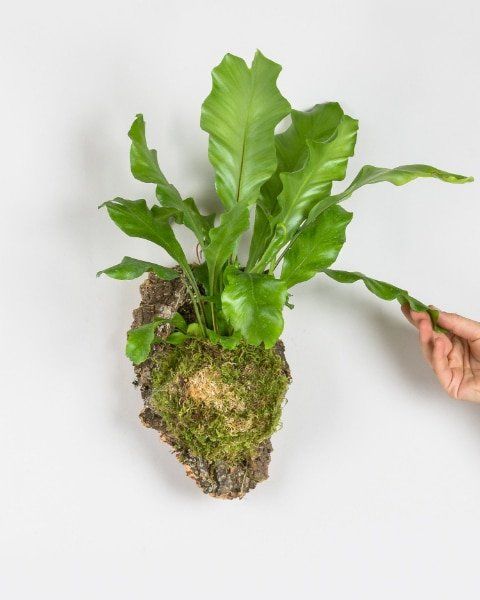
Bird's Nest Ferns are great if you're wanting a hanging plant with more structure. Depending on the variety you choose, the plant's curved leaves will either grow outwards towards the sun, or as long, trailing leaves. The reason why the Bird's Nest Fern is a great choice for an indoor hanging plant is because of its growth habit; which, sees new leaves grow from a central bunch. It also benefits from a spot that has a little extra humidity and only needs to be watered weekly.
6. Philodendron
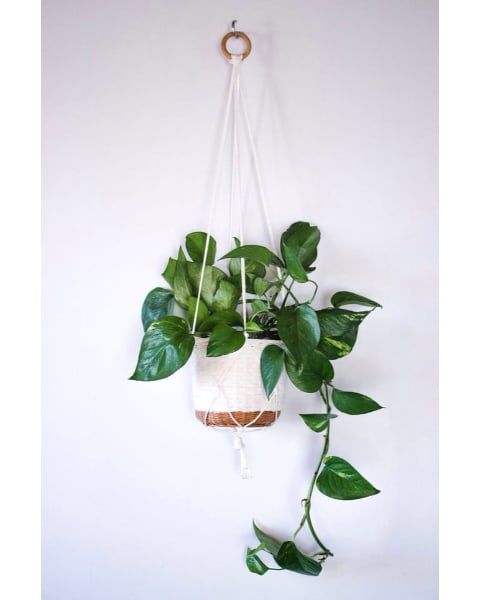
If you're just starting out with your collection of indoor plants, Philodendron is a great plant for beginner horticulturists. This deep trailing ivy actually thrives best with minimal attention – so, if your lifestyle can be chaotic at times, this is the plant for you. It's actually a great option as a plant to hang in higher points of your home and its watering requirements will depend on how much sun exposure it receives. Truly, the hardest part about caring for a Philodendron is choosing which one to have in your home; as there are so many varieties with diverse shades of colour and leaves.
7. Orchids
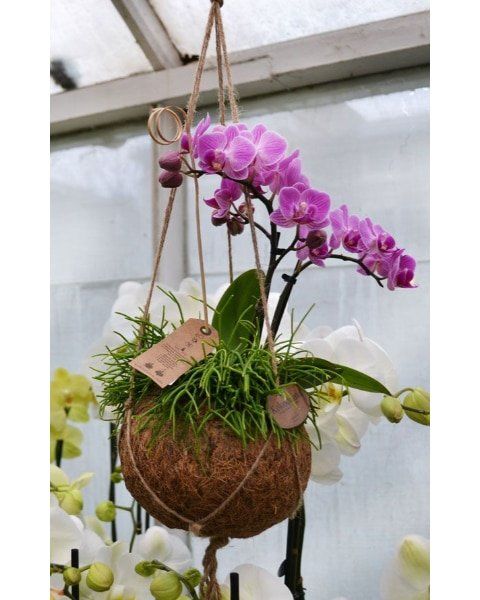
This may surprise some, but Orchids make from great indoor hanging plants – specifically Cattleya Orchids or Vanda Orchids. They make for a beautiful statement feature accompanied by other, more greenery-based indoor plants and depending on the colour of Orchid you choose, can add a pop of colour to an otherwise barren area. They do require more sunlight than other indoor plants and because the flowers they bloom are fragrant, you get a wonderfully smelling home as a bonus.
8. String of Pearls
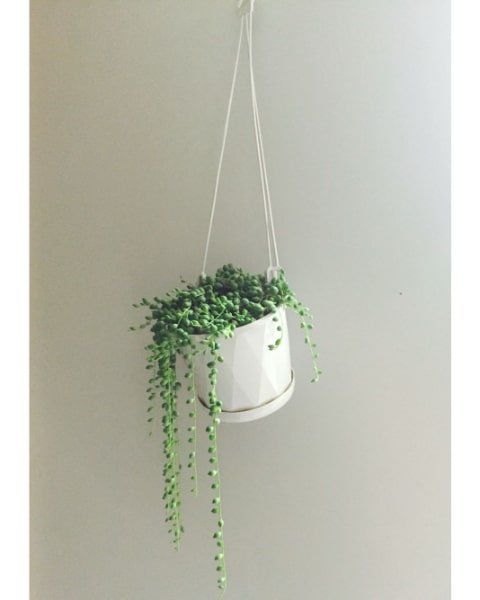
String of Pearls, not to be confused with the equally adorable String of Hearts, is one of the most distinct, space-changing indoor plants. The plant is characterised by plump, round 'pearls' that almost resemble peas. The most interesting fact is that the beads are actually filled with water to help distribute water through long periods of drought. Because of this, they are very sensitive to overwatering and only need to be watered once every two weeks. Great for low-maintenance households.
9. Staghorn Fern
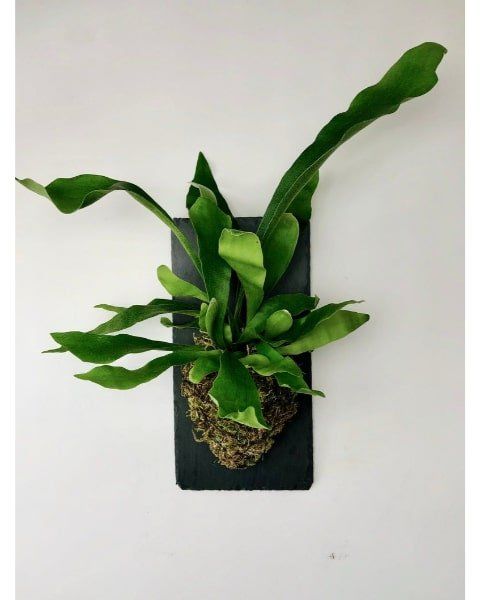
Staghorn Ferns are certainly a more modern, abstract twist on conventional ferns. Due to its unique leaf shapes that characteristically grow long and wide and almost resemble antlers, incorporating a Staghorn Fern into your space can help to create an easy statement moment that is pet friendly too. It is important to note that they do prefer natural light and a lot of it – so this plant is great for kitchen or bathroom spaces.
10. Burro's Tail

The reason why Burro's Tail is one of the most desirable indoor plants is because it is actually a succulent; making it extremely low-maintenance. Similarly to String of Pearls, this plant also holds water inside its unique pillow-like leaves and only needs to be watered once a month. You may have seen Burro's Tail placed in smaller, tabletop pots, but it also serves as a great, vibrant hanging plant when its stems and leaves are able to grow freely.



![A Tranquil Jungle House That Incorporates Japanese Ethos [Video]](https://asean2.ainewslabs.com/images/22/08/b-2ennetkmmnn_t.jpg)









